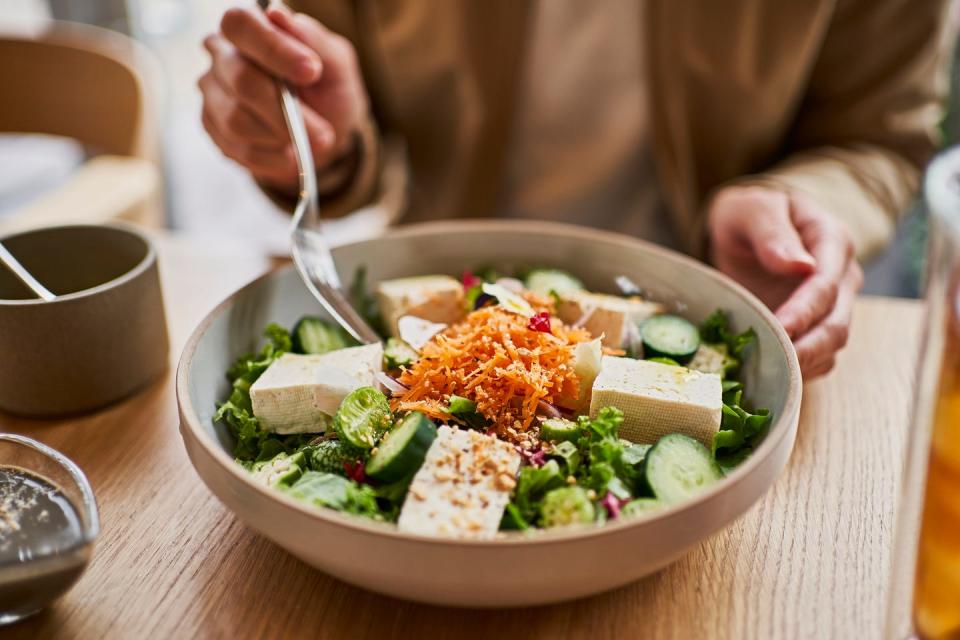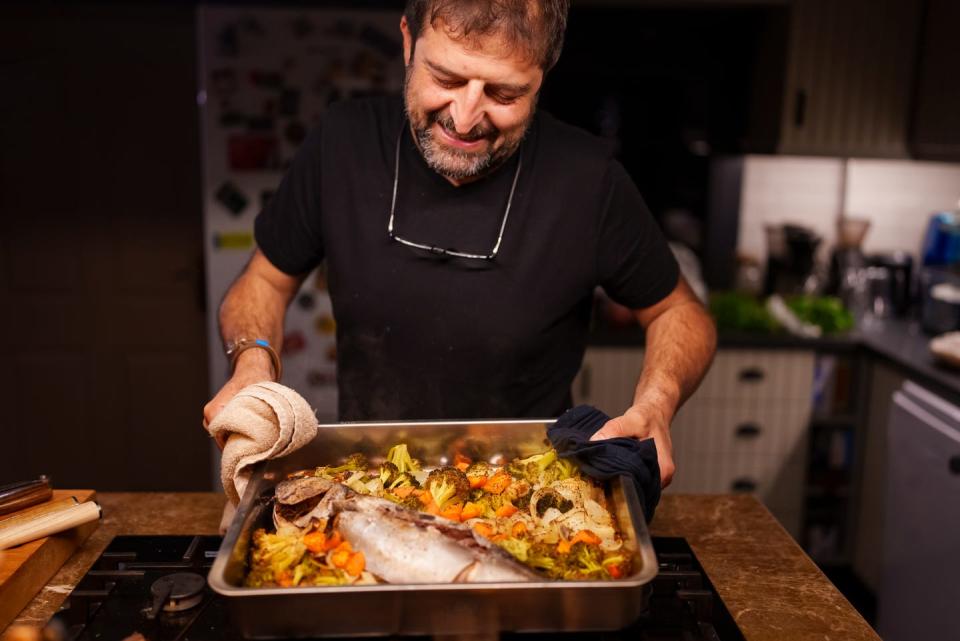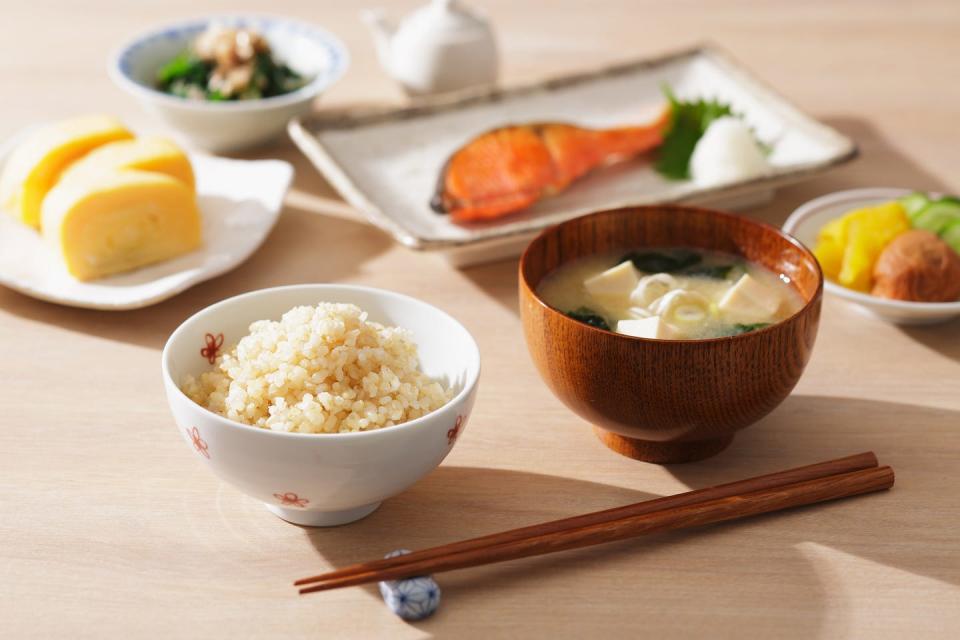The 6 Expert-Approved Diets That Are Actually Worth Trying

"Hearst Magazines and Yahoo may earn commission or revenue on some items through these links."
ASK DIETITIANS WHAT the best diet for men is, and you’ll be met with a chorus of “none!”
Of course, the concept of “diet” in the no-carbs-no-cookies-no-joy mode isn’t something nutrition pros promote, especially because committing to a restrictive eating plan can lead to the “yo-yo diet” phenomena in which you gain back any weight you lost—and maybe even more.
“We must always provide the ‘why’ before one is willing to try,” says Leslie Bonci, M.P.H., R.D.N., sports dietitian to the Kansas City Chiefs and co-founder of Performance365. Still, she concedes that “an emphasis on feeling full, satisfied and enjoying what one eats is the key to sustainability and success."
We wholeheartedly agree. And, sometimes, following a calculated diet is the best way to do that—instead of being lost in the shuffle of what to eat and what not to eat.
Below, our Men's Health advisors consult on what makes a 'good' diet, and a few of their favorites.
What makes a 'good' diet?
Like many things in the realm of nutrition, the answer isn’t etched in stone.
As Dezi Abeyta, R.D., founder of Foodtalk Nutrition says, the concept of "good versus bad" in diets is nuanced and can't be simplified into black-and-white categories.
“We must consider factors like access to food, education, money, and cultural differences,” he says. However, if we were to organize these into quality diets and those with "room for improvement", here’s how he would define things: “A quality diet is accessible, diverse, protein-rich, plant-forward, and consistent. It includes colorful fruits and vegetables, fiber, and omega-rich fats."
It’s also important to ensure the diet you’re considering is sustainable. If you don’t like a diet enough to maintain it, it won’t work for you in the long-term. “On the flip side, a diet with room for improvement often lacks access to nutrient-rich foods, education on nutrition, and consistency in protein intake. It also tends to be high in added sugars and highly processed foods,” he says.
Of course, everything in moderation, even moderation itself—as the saying goes—so the occasional cookie or cheeseburger isn’t going to derail your overall health goals.
Flexitarian Plant-Based Diet
Abeyta calls the flexitarian plant-based diet one of the best diets for men aiming for performance. This "semi-vegetarian lifestyle," emphasizes plant-based food options most of the time, but also leaves some room to enjoy the occasional meat-lover plate.
With a higher focus on beans, nuts, whole grains, and produce, you'll likely see massive benefits with the inclusion of micronutrients, fiber, and overall advantageous distributions of macronutrients that have been shown to positively affect preventable diseases like diabetes and heart disease, Abeyta says.

Balance Performance Diet
Another top pick of Abeyta, this diet emphasizes ample protein intake (between 1.7 and 2.0 grams per kilogram of your body weight per day, in fact), strategic caloric and macronutrient distribution throughout the day, and prioritizing anti-inflammatory foods to support muscle growth, sustained energy, and optimal recovery.
This diet does so “all while emphasizing quality sleep, stress relief strategies, as well as a strength program that allows you to have some sort of progressive overload,” he says.

Eating Around the World Diet
Abeyta promotes this global eating regime, as “incorporating diverse cultural cuisines into your diet, enhances flavor, boosts overall nutrient intake, reduces the risk of deficiencies, and promotes better health outcomes.”
He says that embracing foods from various cultures provides a broader array of essential nutrients, combats nutrient gaps, and fosters a greater appreciation for global culinary traditions, ultimately contributing to optimal health markers like cholesterol levels, blood pressure, and body weight.

A Mediterranean-Style Diet
Bonci appreciates the emphasis on produce and beans on this well-researched and health-supportive diet as they are “foods that have fiber and help one fill up, not out.”
A Mediterranean-style diet focuses more on fish than other animal proteins, eggs, olive oil, and whole grain breads. Most importantly, this diet fills you up and leaves you satisfied. “Protein is a side rather than front and center, but meals are hearty, provide ‘the chew,’ and staying power,” says Bonci.

Intermittent Fasting
New to the IF or intermittent fasting bandwagon?
“Intermittent fasting is basically time-restricted eating, where you only eat within a designated window of time during the day,” says Bonci. “Shortening the hours one chooses to eat can be easier to follow than changing the foods one eats.”
Studies have found that potentially weight-loss friendly plan works well for those who tend to over-consume at night as they are eliminating the excess calories, but not depriving themselves during the day.

Volumetrics
Want to eat more and still lose weight? Volumetrics may be for you.
Volumetrics is a plan that lowers the energy density (or caloric content) of meals by increasing the liquid content of your meals with salads, soups, stews, chilis, etc., says Bonci. Some key advantages of this diet are the visual appearance of more food on your plate and the fact the food takes up more room in the gut, so you feel fuller for longer.
“The beauty of volumetrics is that the plate/bowl is not tiny, but the calories are lower since some are displaced by having a higher fluid content,” says Bonci. “Plus, foods such as soups, stews, salads require a utensil and take longer to eat."
This principle can also be applied to shakes where volume can increase with veggies, ice, frozen fruit, and yogurt without such a high calorie cost.

You Might Also Like


